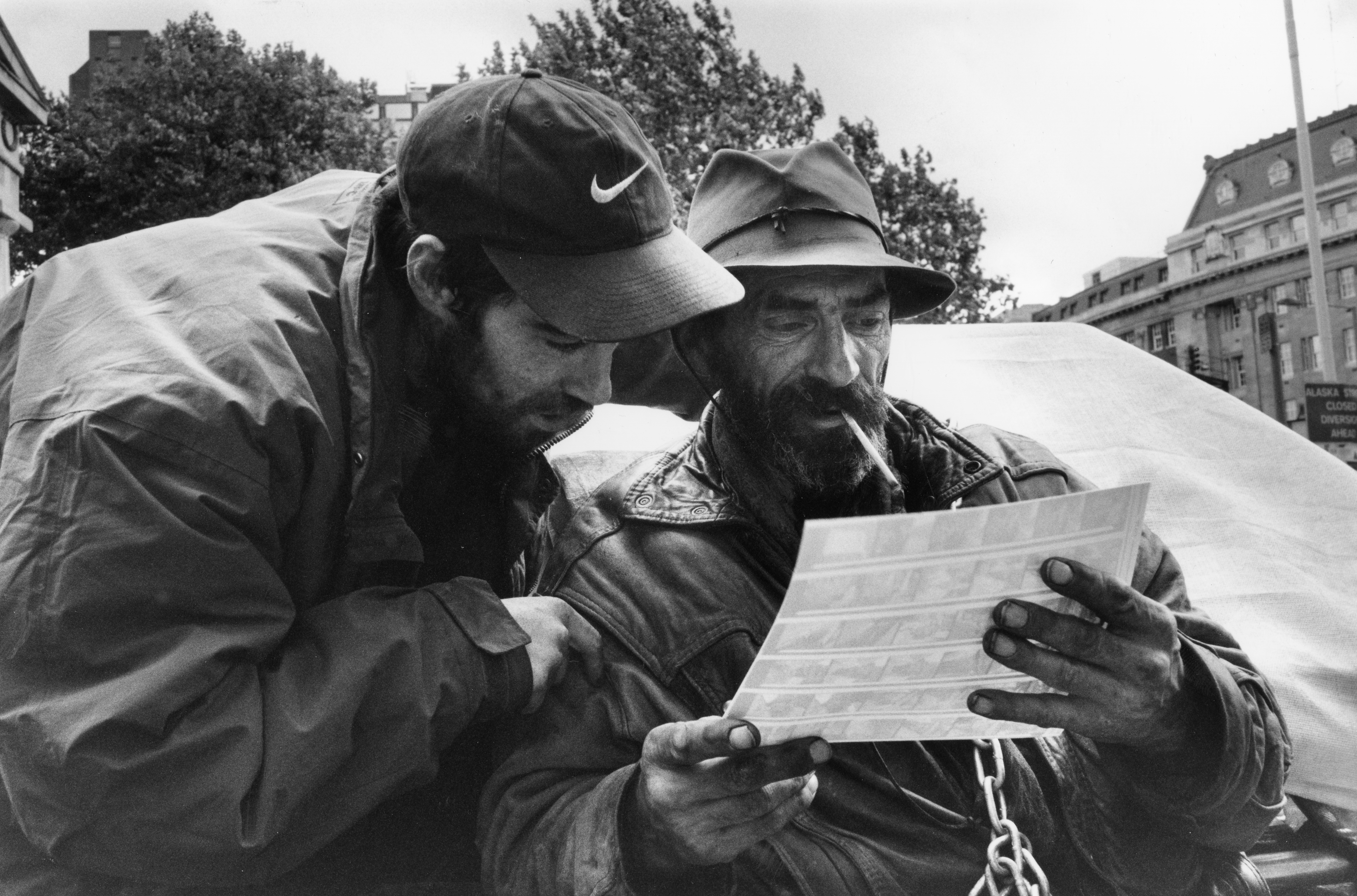This website uses cookies so that we can provide you with the best user experience possible. Cookie information is stored in your browser and performs functions such as recognising you when you return to our website and helping our team to understand which sections of the website you find most interesting and useful.
Support truly
independent journalism
Our mission is to deliver unbiased, fact-based reporting that holds power to account and exposes the truth.
Whether $5 or $50, every contribution counts.
Support us to deliver journalism without an agenda.

Louise Thomas
Editor
What always struck me about Moyra Peralta’s photographs was the authentic and joyful connections I could feel between her and the people she captured through her lens. Her images communicate a deeply personal relationship to the community she documented.
While a student in the 1970s, Moyra began working in hostels and soup kitchens where she immersed herself in documenting aspects of homelessness.

Invited into the lives of those she encountered, Moyra bore witness to the existing social conditions they faced. As a photographer she sought to offer an unbiased look into their world, seeing individuals and their experiences as an important part of our social history.
In conversation with Moyra’s grandson, he shared with me that she lived in the homeless shelter for some time and that was how she was able to build such a strong trusting friendship with her subjects. “She became a part of their lives, and they became a part of hers.”


Her images sought to bring relief to the people she met on the streets of London while immortalising their experiences and celebrating their lives through her warm and connected shooting style.
She tried to portray them from their own perspectives, to allow them a voice through her images, a platform for their own expression.



While other documentary photographers can give a feeling of “looking in” and observing without engagement, I’ve always had a sense of Moyra’s work coming from the inside out. A feeling of the very spirit of life on the street, the comradeship, the authenticity, the hardships endured, and the joys felt in the face of adversity by individuals and collectively.
In recognition of Moyra’s images, pioneering art critic, novelist and cultural thinker John Berger said: “We who look at her photographs are witnessing an exchange. We overhear with our eyes, two or more voices talking to one another. And the voices have allowed us to be there.”


From her work documenting the objects, items and “survival kits” in the pockets of her comrades, to capturing the last days of the Waterloo Bullring inhabitants (Cardboard City), Moyra helped people reconnect with their humanity through her images. Celebrating the breadth of subjects in Moyra’s photography, her work was later compiled into a book Nearly Invisible and exhibited at the Open Eye Gallery.
Open Eye manager David Williams aptly said: “Her photographs eloquently remind us that the homeless, though existing in circumstances different to most, are individuals with the same emotions and feelings as all of us.”

In response, Moyra’s grandson shared: “I feel from getting to know Moyra and other homeless people [that] their stories aren’t so estranged from the regular story we all go through. A simple action can change the path of one’s life so unexpectedly; anyone at any time could become these people.”
Today, Moyra’s work conveys a mosaic of the homeless experience to the rest of society, in a way only someone who was deeply connected to her own and her fellows’ humanity could.



 Africana55 Radio
Africana55 Radio 
